Yoga and Meditation: How to Incorporate Meditation into Your Yoga Practice
Hey there, fellow yogis (and aspiring yogis!)! We all know and love the strength, flexibility, and peace that yoga brings to our lives.
But have you ever thought about taking your practice to the next level by incorporating meditation?
If that idea piques your interest, you’re in the right place. Let’s dive into the magical union of yoga and meditation.
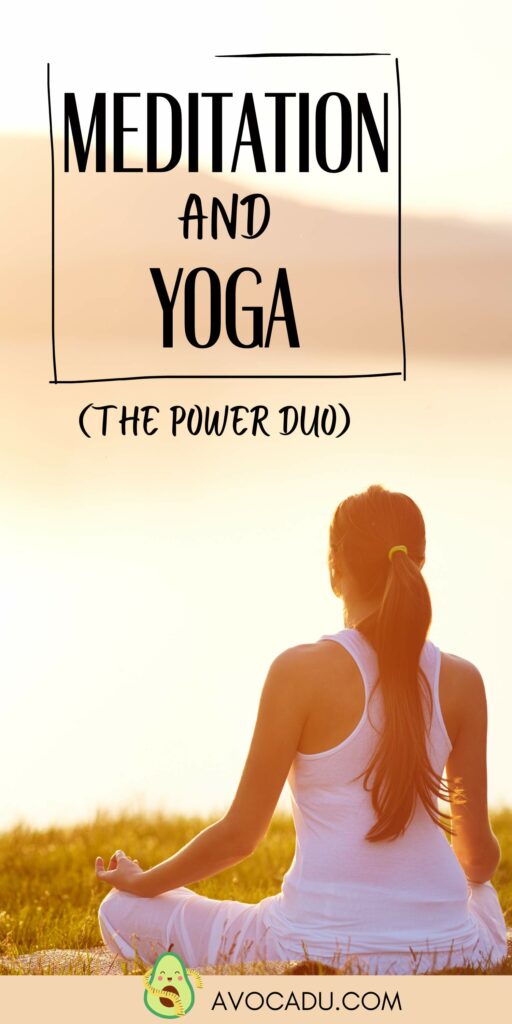
This post may contain affiliate links, which helps keep this content free. Please read our disclosure for more info.
Understanding Meditation
Meditation, at its core, is like a gym session for your mind. While we often work out our bodies, we sometimes forget that our minds need training too. Meditation serves as this training—helping to strengthen your mind, increase its resilience, and enhance its ability to focus.
There’s a wide range of meditation techniques out there, each with its unique approach, but all centered around cultivating mindfulness and relaxation. Here are some popular ones:
Mindfulness Meditation: This is all about being present. It involves paying attention to your thoughts, emotions, and sensations without judgment. It’s about noticing what’s happening right now, in this very moment.
Loving-Kindness Meditation (Metta Meditation): This form focuses on cultivating an attitude of love and kindness toward everything, even your enemies and sources of stress.
While breathing deeply, you’ll open your mind to receiving loving kindness, and then send messages of love to the world, specific people, or your loved ones.
Progressive Relaxation (Body Scan): This practice aims to relax and soothe your body. You’ll slowly tense and then relax each muscle group, enhancing your awareness of physical sensations.
Transcendental Meditation: This is a form of silent mantra meditation, meaning you’ll repeat a word or series of words to clear your mind. It’s all about transcending the busy chatter of the mind to reach a state of pure consciousness.
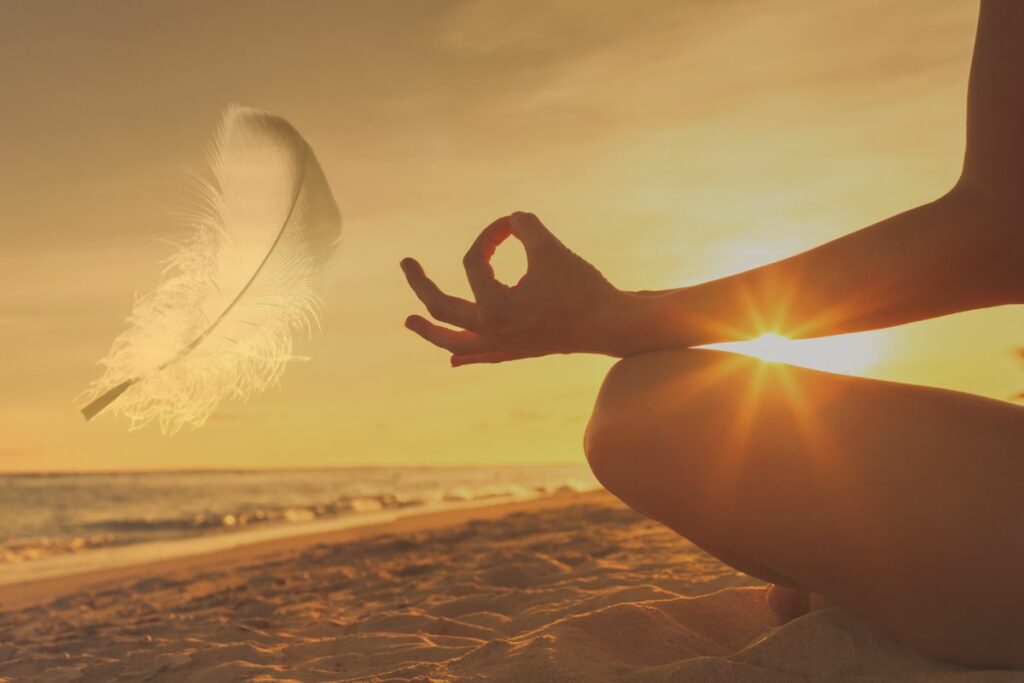
Meditation is proven to reduce stress and anxiety, improve concentration, promote better sleep, and increase self-awareness. It’s like a supercharge for your mental health.
Plus, a happiness bonus – regular meditation can lead to increased feelings of calm and happiness.
Scientific studies have shown that meditation doesn’t just make you feel good; it can physically change your brain. We’re talking increased gray matter in areas associated with memory, sense of self, empathy, and stress regulation. So, in effect, it’s like you’re sculpting your brain to be more resilient, empathetic, and stress-resistant.
Understanding Yoga
Yoga, a word derived from the Sanskrit word “Yuj” meaning to bind, join, attach, or yoke, started its journey around 5,000 years ago in India.
The practice of yoga was initially a means to understand the world and self, and over centuries, it has transformed and adapted to cater to evolving lifestyles.
Contrary to the common perception that yoga is all about complex poses and flexibility, it’s actually a comprehensive discipline that integrates several elements. Let’s break it down:
Asanas: These are the physical poses that most people are familiar with. Asanas help improve the strength, flexibility, and balance of the body. But they do more than that—they also increase body awareness, make you more mindful of your movements, and can even serve as a form of moving meditation.
Pranayama: The word “pranayama” breaks down into “prana” (life force or breath) and “yama” (control). So, pranayama is all about controlling the breath.
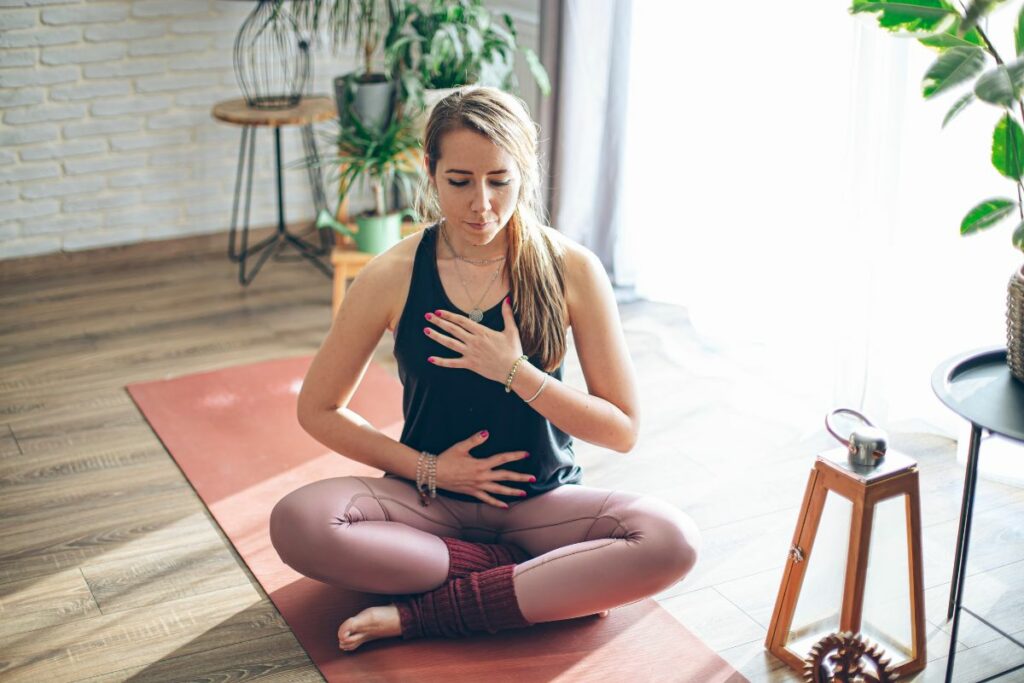
By learning to control your breath, you can influence your mental state, soothe your nervous system, and even enhance your physical performance in the asanas.
Dhyana: This is the formal practice of meditation within the yoga tradition. Yoga sees meditation as a way to achieve a state of pure consciousness where you go beyond the mind and its fluctuations to experience a deeper sense of self.
Yoga is more than just a physical workout—it’s a holistic practice that nurtures your mind, body, and spirit. It’s about developing a profound connection with yourself, gaining a better understanding of your body, and cultivating a peaceful state of mind.
And guess what? All these elements of yoga dovetail beautifully with meditation, leading to a harmonious synergy that enhances the benefits of both practices.
With yoga, you’re not only working on your body’s flexibility but also your mind’s. It’s a journey of self-discovery and self-improvement, a gift that keeps on giving!
Related Article: Exploring Different Styles of Yoga: Which One Suits You Best?
The Interrelation of Yoga and Meditation

Yoga and meditation are two peas in a pod—they come from the same spiritual and philosophical family, and while they have their unique qualities, they also share many similarities.
Both practices are about cultivating mindfulness and fostering a deep, holistic connection between the mind and the body.
In yoga, this connection is established through the physical poses (asanas), the controlled breathwork (pranayama), and the meditation (dhyana).
The physical practice not only helps in enhancing strength, flexibility, and balance but also promotes a sense of awareness and mindfulness about one’s body and its movement.
On the other hand, meditation hones in on the mental and emotional aspects, helping us cultivate inner peace, focus, and resilience.
But the magic really happens when you bring these two practices together. Here’s how:
Body Prep: The physical poses in yoga serve as a great prep for meditation. Certain postures can release tension and tightness in the body, making it easier for you to sit in a meditative pose for longer periods without discomfort.
Breath Connection: Breathwork or pranayama in yoga is a form of meditation in itself. It helps you tune into the natural rhythm of your breath, promoting a sense of calm and presence. This breath awareness can be a powerful bridge between your physical practice and seated meditation.
Mindfulness Training: In yoga, you’re encouraged to stay mindful of each movement, each breath, and each sensation. This is a fantastic training ground for meditation, where the goal is to stay fully present and aware.
So, as you can see, it’s not just a win-win—it’s a synergistic relationship where each practice enhances the other, making your journey towards mindfulness, peace, and wellbeing more rewarding and fulfilling. It’s like getting a two-for-one deal on your path to self-discovery and personal growth!
Incorporating Meditation into Your Yoga Practice
Wondering how to start adding meditation to your yoga routine? Let’s dive deeper into how you can smoothly incorporate meditation into your yoga practice.

Savasana
Savasana, also known as Corpse Pose, typically marks the end of a yoga session, providing a much-needed moment of rest after a series of asanas. But it’s far from just a quick “nap time.” It’s an excellent opportunity to segue into a meditation practice.
As you lay on your mat, fully relaxed and free from the physical exertion of asanas, your body is primed to embrace a state of mindfulness.
You can focus on the gentle rhythm of your breath, silently repeat a soothing mantra, or simply let your thoughts come and go without judgment. Before you know it, you’re meditating!
Pranayama
Breath is the life force that fuels us, and pranayama teaches us to harness this power. By intentionally controlling your breath, you anchor your mind to the present moment, naturally leading to a meditative state.
You can experiment with different pranayama techniques, like alternate nostril breathing (Nadi Shodhana), the cooling breath (Sheetali Pranayama), or the three-part breath (Dirga Pranayama). Each technique offers unique benefits and can deepen your meditation practice.
Meditating during Asanas

Asanas, or yoga postures, provide a fertile ground for meditation. As you flow from one posture to another, try to maintain a heightened level of mindfulness.
Focus on how your breath coordinates with your movements, pay attention to the sensation of each stretch or balance, and immerse yourself in the experience.
This practice of mindfulness in motion can be deeply meditative and transform your asana practice into a moving meditation.
Seated meditation
Seated meditation is often what people visualize when they think about meditation. Incorporating this traditional form of meditation into your yoga routine can be incredibly beneficial.
You can meditate at the start of your practice to set an intention or center yourself. Alternatively, try breaking up your asana sequence with a few moments of meditation to recalibrate.
You can also conclude your practice with meditation to soak in the effects of your practice and wind down.
In meditation, consistency trumps duration. So, even if it’s just a few minutes each time, it counts!
Incorporating meditation into your yoga practice can amplify the benefits of both, resulting in a more balanced and harmonious mind-body connection.
Give it a try and notice how it enhances your overall practice. Remember, yoga and meditation are personal journeys—do what feels right for you, and most importantly, enjoy the process!
Guided Steps to Start Meditative Yoga Practice
We all start somewhere, right? If you’re a beginner, it’s entirely normal to feel a bit uncertain about incorporating meditation into your yoga practice.
But rest assured, the process doesn’t have to be complicated. In fact, the beauty of yoga and meditation lies in their accessibility and flexibility.
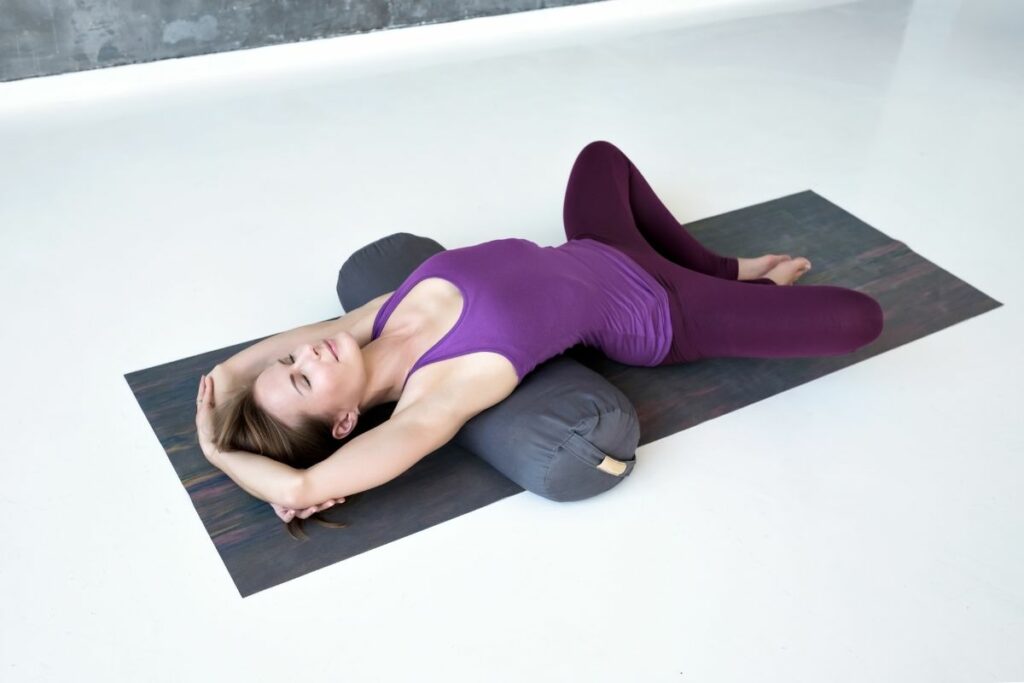
Step 1: Set an Intention: Before you begin your practice, set an intention. This could be anything from wanting to cultivate peace, seeking clarity on a particular issue, or simply wanting to stay present throughout your practice. This intention will be your anchor, helping you stay focused during your session.
Step 2: Start with Savasana or Seated Meditation: Both of these poses are perfect for beginners. Savasana, also known as Corpse Pose, is usually done at the end of a yoga class, but it can also be a fantastic starting point for your meditation practice.
Alternatively, find a comfortable seated position, close your eyes, and focus on your breath. Initially, aim for just a few minutes and gradually increase the duration as you feel more at ease.
Step 3: Focus on Your Breath: One of the simplest ways to meditate is to concentrate on your breath. Observe the sensation of air entering and leaving your nostrils or the rise and fall of your abdomen. If your mind starts to wander (and it will!), gently bring your attention back to your breath.
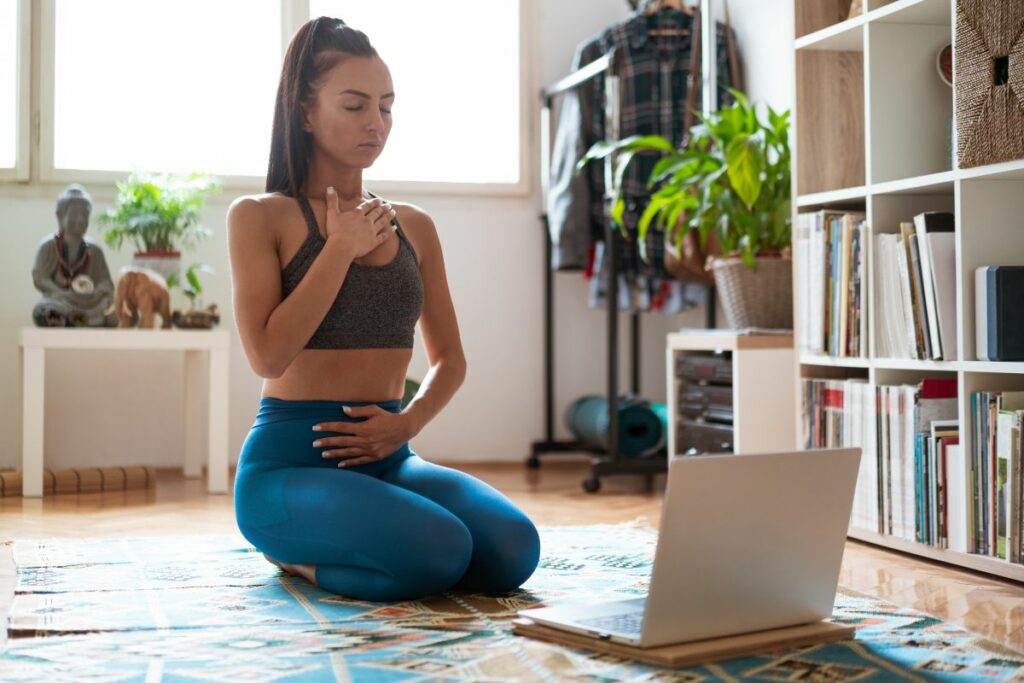
Step 4: Practice Mindfulness during Asanas: As you transition into your yoga sequence, aim to maintain mindfulness. Notice the sensation in your muscles as you stretch, the feeling of your body against your mat, and the rhythm of your breath. Each of these can serve as a point of focus, encouraging a meditative state.
Step 5: Explore Different Forms of Meditation: Once you’re comfortable with basic breath meditation, consider exploring other forms like mantra meditation or loving-kindness meditation. This can add variety to your practice and help you discover what works best for you.
Step 6: Be Consistent: Consistency is key in meditation. Even if you can only spare a few minutes each day, that’s perfectly okay. What’s important is that you show up for yourself regularly.
Step 7: Customize Your Practice: Remember, your practice is personal. You might prefer to meditate in the morning to set the tone for your day, or you might find an evening meditation helps you unwind.
Maybe you enjoy meditating in the quiet solitude of your home, or perhaps nature brings out the best in your practice. Experiment and find what resonates with you.
Starting a meditative yoga practice may feel a little daunting at first, but remember, every expert was once a beginner. Be patient with yourself, honor where you are in your journey, and most importantly, enjoy the process!
Common Challenges and Solutions
If you’re new to this, you might run into some roadblocks.

Challenge 1: Difficulty in Focusing: Many beginners find it hard to concentrate during meditation. Thoughts may race, or your mind may drift. This is totally normal! The mind is like a playful monkey, constantly jumping from one thought to another.
Solution: The key here is not to suppress thoughts but to observe them without judgment. Over time, you’ll notice that your mind begins to calm. Also, using techniques like breath focus, mantra repetition, or guided meditation can provide your mind with a point of focus, making it easier to stay present.
Challenge 2: Physical Discomfort: Sitting still for extended periods can sometimes lead to discomfort or restlessness. Again, this is quite common when you’re just starting out.
Solution: You don’t have to sit in the traditional cross-legged position to meditate. Feel free to experiment with different postures. You can try lying down, sitting on a chair, or even using props like cushions or bolsters for additional support. The idea is to find a position where you feel stable and comfortable.

Challenge 3: Lack of Time: One of the most common roadblocks people face is the feeling of not having enough time to meditate.
Solution: The good news is that even a few minutes of meditation can be beneficial. You can start with just 5 minutes a day and gradually increase this as your schedule allows. Also, remember that meditation can be practiced anywhere – during your morning commute, on a lunch break, or even while waiting in line.
Challenge 4: Expecting Instant Results: Meditation is a journey, not a destination. Some beginners may become discouraged if they don’t see immediate results.
Solution: Patience is key when it comes to meditation. Don’t be too hard on yourself. Just as it takes time to build physical strength and flexibility through yoga, it takes time to experience the mental and emotional benefits of meditation.
It’s not about achieving a particular state, but about the practice itself.
Challenge 5: Inconsistency: Regularity can be a challenge, especially when starting a new habit.
Solution: Consistency is key in meditation. Even if you can only spare a few minutes each day, that’s okay. Creating a routine can help—try to meditate at the same time each day to build a habit.

Also, remember that every session won’t feel the same, and that’s perfectly normal. The important part is showing up for your practice.
Challenges are part of the journey. They’re not roadblocks but stepping stones, guiding you along your path.
Stay patient, keep experimenting, and over time, you’ll find a rhythm that works perfectly for you.
The journey of yoga and meditation is one of self-discovery, and these initial challenges are just part of that beautiful journey.
The Impact of Regular Meditative Yoga Practice
Ready for some good news? Regular meditative yoga practice can have profound effects on your wellbeing.

Physical Benefits: Yoga is well-known for improving flexibility, strength, and balance, but when you incorporate meditation into your practice, the benefits expand exponentially.
Regular practice can lead to lower blood pressure, improved digestion, reduced chronic pain, and better sleep. The deep relaxation experienced during meditation also boosts the immune system, promoting overall health.
Mental and Emotional Benefits: The magic of meditative yoga truly shines in the realm of mental and emotional health. Regular practitioners often report lower stress levels, reduced symptoms of anxiety and depression, and improved mood.
This happens because meditation helps decrease the production of stress hormones while increasing the production of feel-good neurotransmitters like serotonin and dopamine.
Cognitive Benefits: The impact of meditative yoga extends to your brain health too! Regular practice can enhance focus, attention span, memory, and cognitive function.
It’s like brain training—you’re continually strengthening your mind’s ability to concentrate and process information, which can be a game-changer in every aspect of your life, from work to relationships to personal growth.
Spiritual Benefits: For many, meditative yoga is not just a physical or mental exercise—it’s a spiritual practice. It allows for deep self-reflection and a greater understanding of one’s place in the world.
This can lead to increased self-awareness, empathy, compassion, and a sense of connection with something larger than oneself.

Improving Quality of Life: On a broader level, people who regularly practice meditative yoga often report an enhanced quality of life. They experience more peace, clarity, joy, and even creativity. It’s as if the fog lifts, allowing for a clearer, brighter perspective on life.
Transforming Stress Response: With consistent practice, you can train your mind and body to handle stressful situations more effectively. Instead of reacting impulsively, you’ll find yourself responding mindfully.
This can drastically transform your stress response, making you more resilient in the face of life’s challenges.
Promoting Mind-Body Connection: Perhaps one of the most profound impacts of a regular meditative yoga practice is the deep mind-body connection it fosters.
This connection can bring about a sense of harmony and balance in your life, grounding you in the present moment and helping you live a more mindful and intentional life.
Countless individuals have transformed their lives through a consistent meditative yoga practice. These benefits don’t just exist on the mat—they extend to all areas of life.
Everyone’s journey is unique, and the impacts of meditative yoga practice will manifest differently for everyone. But rest assured, the potential for positive change is profound.
Embrace Your Journey: Unleash the Power of Meditative Yoga!
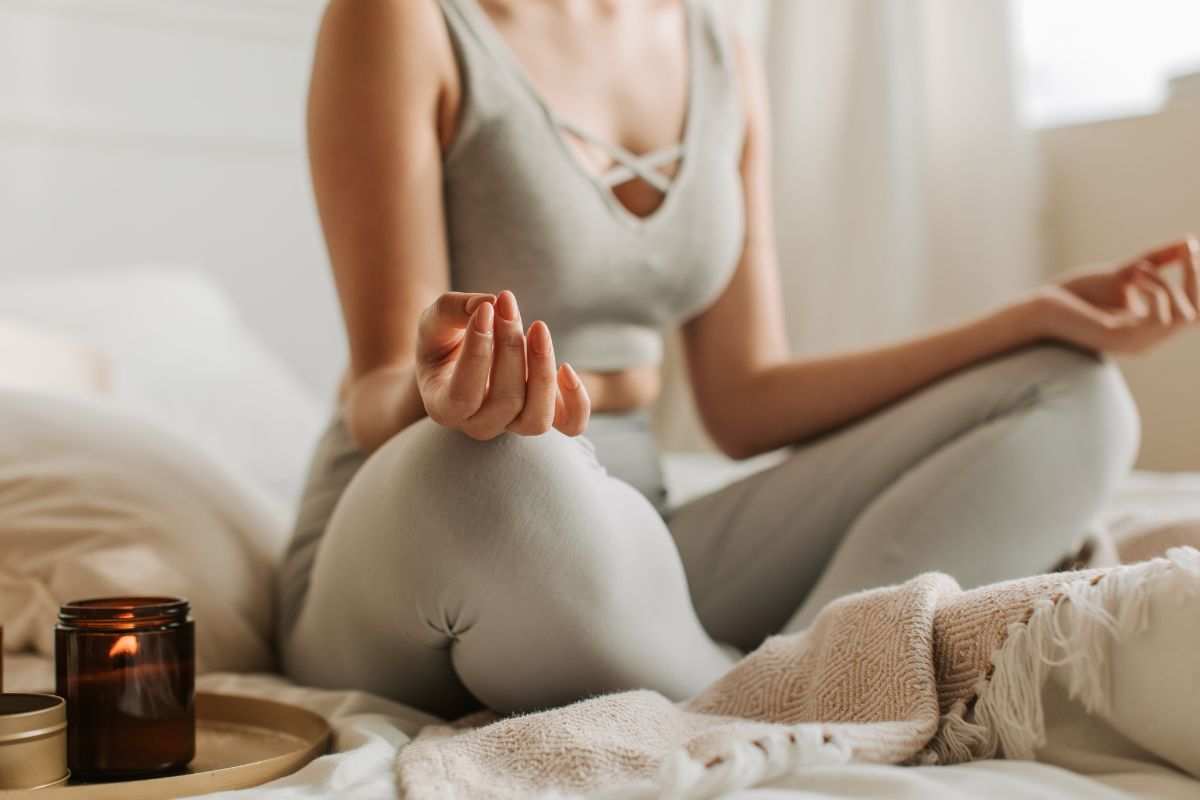
We hope your heart is pumping with excitement and your mind brimming with curiosity.
Combining meditation and yoga isn’t just an exercise – it’s an awakening, a rejuvenation, and a gift to yourself.
But wait, let’s not forget it’s also a journey—a journey that’s uniquely yours. From those initial wobbly poses and monkey-mind moments, you’re embarking on a path of self-discovery, mindfulness, and profound well-being.
And what makes this journey so darn special? It’s tailored by you, for you.
So, Roll Out That Mat!
Seriously, why wait? Whether it’s a sunlit corner in your home or a shaded spot in the park, your oasis awaits. The beauty of meditative yoga is its adaptability. Morning, noon, or night—whatever feels like your time, grab it!
Related Article: The 5 Best Yoga Mats for Beginners Reviewed
Lean on Your Tribe and Resources
You’re not alone on this adventure. The yoga and meditation community is vast and incredibly supportive. Plus, we live in an age where information and guidance are literally at our fingertips. Craving more insights?
Hop onto platforms like Headspace or Calm for guided meditations. Looking for yoga-specific gems? Yoga with Adriene or CorePower Yoga are just the tip of the iceberg.
Books, podcasts, and online forums are also fantastic resources. Exchange stories, share victories, and maybe even a few giggles over those funny yoga fails. We all have them!

It’s Not Just a Practice, It’s a Lifestyle
As you continue this practice, you’ll find it’s more than just a segment of your day; it’s a way of life. The calmness, the awareness, and the joy—it spills over, coloring everything. You’re not just building muscles and flexibility; you’re nurturing the very essence of your being.
So, as you embark on this journey of meditative yoga, remember to be kind, be patient, and most importantly, be open.
There are wonders awaiting you. Breathe in, breathe out, and embrace the boundless possibilities. ?
Happy practicing!

